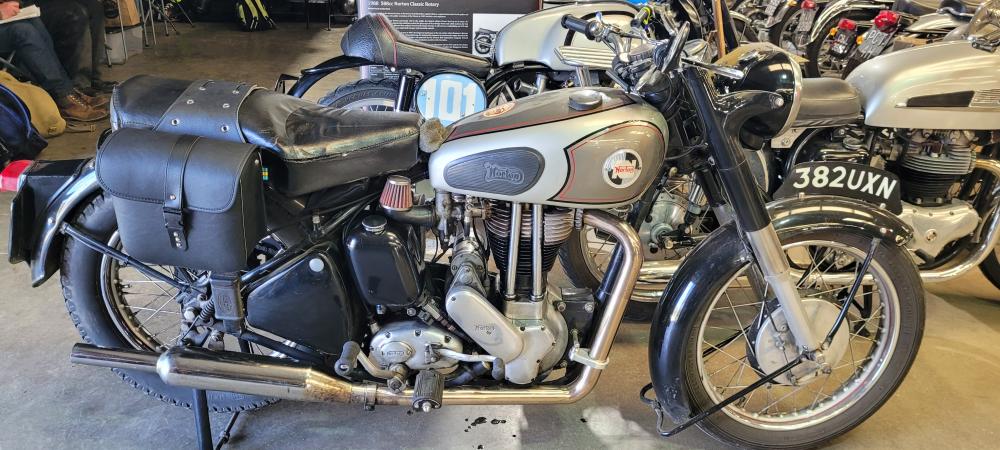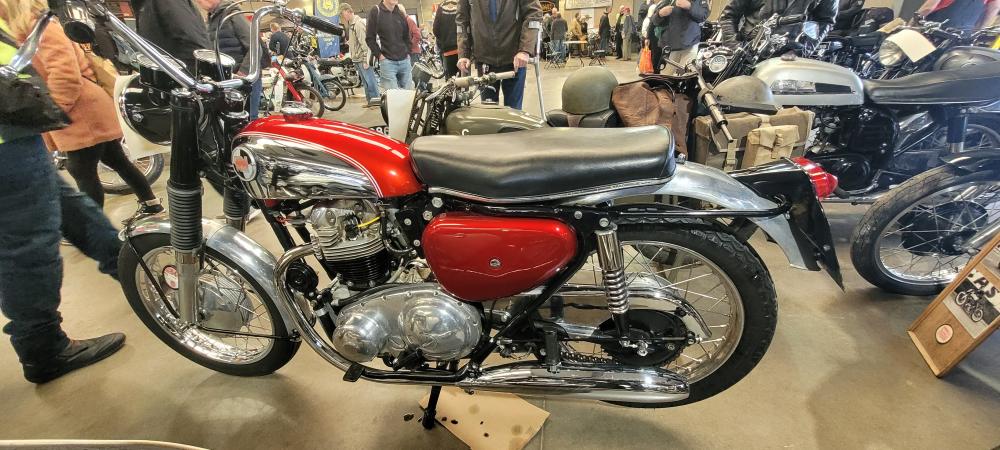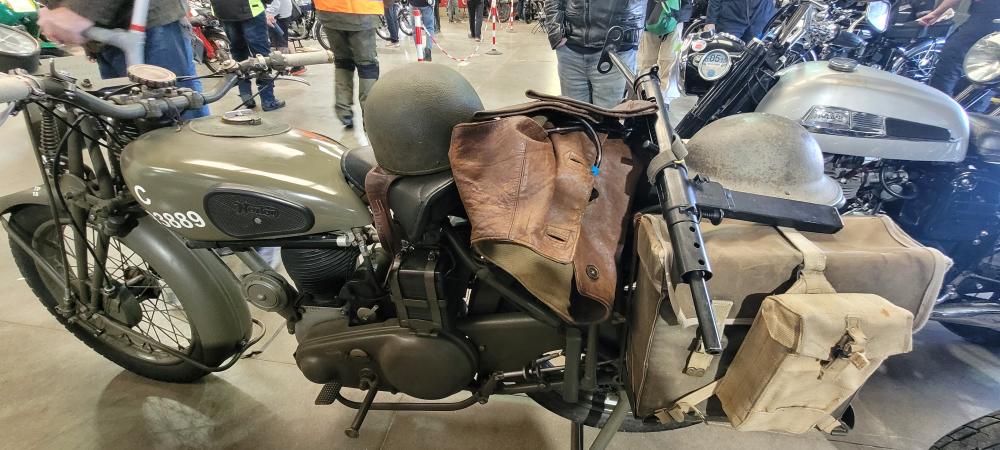A review of correspondence from NOC-L
Oil leaks, yet again: usually due to distortion of the chaincase outer
Leaking chaincase outer
One of my winter bike improvement projects was to try and stop, or at least significantly slow the leaking from my Atlas pressed steel 'oilbath' primary chaincase. Not really wanting to disassemble the entire primary drive I had hoped to get away with installing a new thick rubber seal along with some RTV.
While cleaning and inspecting the inner case mating surface, I noticed that a good part of the circumference appeared to be pushed out, as if the primary chain had broken at some point in the past, or from some other catastrophe. Turning a blind eye to this obvious problem I laid a good bead of RTV down on both sides, slipped on the band, and offered up the outer half. I had some difficulty getting the outer half to go on evenly all the way, due to the damaged areas, but I proceeded anyway, as now there was glue involved, all the while hoping for the best.
After letting the whole mess dry for several days (for the vinegar smell of uncured RTV to dissipate) I poured in the 6 ounces of 30W oil and watched. The next morning I checked again before leaving for work, and finding no spots on the floor, had the warm satisfied feeling of a job well done. Returning home in the evening my spirits sunk at the sight of the growing puddle under the primary; I decided it was time to do the job right and adjust the cases with a hammer and dolly to improve the fit.
Alternatively, is it feasible to fit an alloy chaincase from the Matchless G15 series, or from the Commando? I'm aware that the distance between the engine and gearbox would be shorter and would require a change to the engine plates, but would there also be clearance problems between the rear chain and swingarm?
Dave Culgan (serenade@delanet.com) on NOC-L 5th. Feb 1998
Installation of alternative chaincases
I have had ocassion to install a Commando primary on both an Atlas and a G15. The G15 case is much shorter than either the Atlas or Commando so I would not recommend this change. The Commando case is roughly the same length as the Atlas case and can be fitted to the Atlas with little difficulty although I don't remember all the details of the case installation as it was part of a larger job of fitting the Commando clutch and triplex chain. By the way, the triplex chain must be replaced with a duplex chain and the outer row of teeth machined off the engine sprocket. The gearbox mainshaft must also be replaced with the Commando shaft.
Tom Allen (thomasa@halcyon.com) on NOC-L 7th. Feb 1998
Use silicone rubber to achieve an oiltight fit
I have a more or less oiltight steel case on my 99SS, I stuck a new band to the inner case only - with RTV silicone, and left it to cure with the outer in place for a few days, then I removed the outer and refitted it with a good smear of grease.
This is oiltight, and will allow the easy removal of the outer case if you need to get in there for clutch work. Do not try and over tighten the big nut as you will only end up distorting the cases.
Eddie Stephenson (esteph@globalnet.co.uk) on NOC-L 7th. Feb 1998
Another fix to prevent oil leakage
The usual reason for tin chaincase leaks is over-tightening of the central fixing. This results in the support tube on the inner chaincase collapsing a little, and the flanges of the outer chaincase 'bowing' out: hence the uncurable oil leak. I repaired this on my ES2 by asking a local metalwork shop to true up the outer, offering it up to the inner, and adding a (surprisingly thin) shim between the support tube and the outer chaincase. ! added a little RTV and - hey, no leaks!
Incidentally, if your engine is sumping, you will get a pool of oil from the back of the chaincase anyway when you start the engine. This comes from behind the clutch and is nothing to do with the inner/outer seal.
Frank Westworth (classbikes@aol.com) on NOC-L 9th. Feb 1998
A solution involving no sealing compounds at all
I found out in the 1960s that if you took the rubber seal in one hand, stick your foot into the loop, then stretch the seal until it is actually too large before you refit it, you will stop the leak.
When you refit the outer case, you will squash the rubber back down to size. I still do this with my 650SS and it doesn't leak; it takes seconds and uses no sealing compounds.
Colin Leighfield (cleighfield@compuserve.com) on NOC-L 9th. Feb 1998
Why put any oil at all into the chaincase?
If all else fails, why not consider not putting any oil in the primary chaincase at all? After all, not many bikes have oil bath rear chains. The points to consider are:
- The engine shaft shock absorber, if fitted, should be lubricated. Rubber types are no problem
- The clutch hub bearing, in my experience doesn't need much lubrication; it only works when the lever is pulled in
Use heavy grease, or possibly a sealed bearing - Both cork and fibre friction plates were tried and both seemed OK; (I don't know about bronze)
Just make sure you give the chain frequent squirts of chain lube.
Jordan Princic (jordan@zip.com.au) on NOC-L 9th. Feb 1998
Tightening the chaincase
The Norton manual states that there should be not more than two threads showing outside the big nut; this does not seem tight but it works. I found also that the loose spacer that goes through the case to the engine plate was leaking at the back (engine side), between the big flange and the inner chaincase. I cut a neoprene rubber washer to seal this to the case tube in a similar way to that by which the chrome dished washer on the outside under the big nut is sealed.
Angelo (xne40@dial.pipex.com) on NOC-L 9th. Feb 1997








